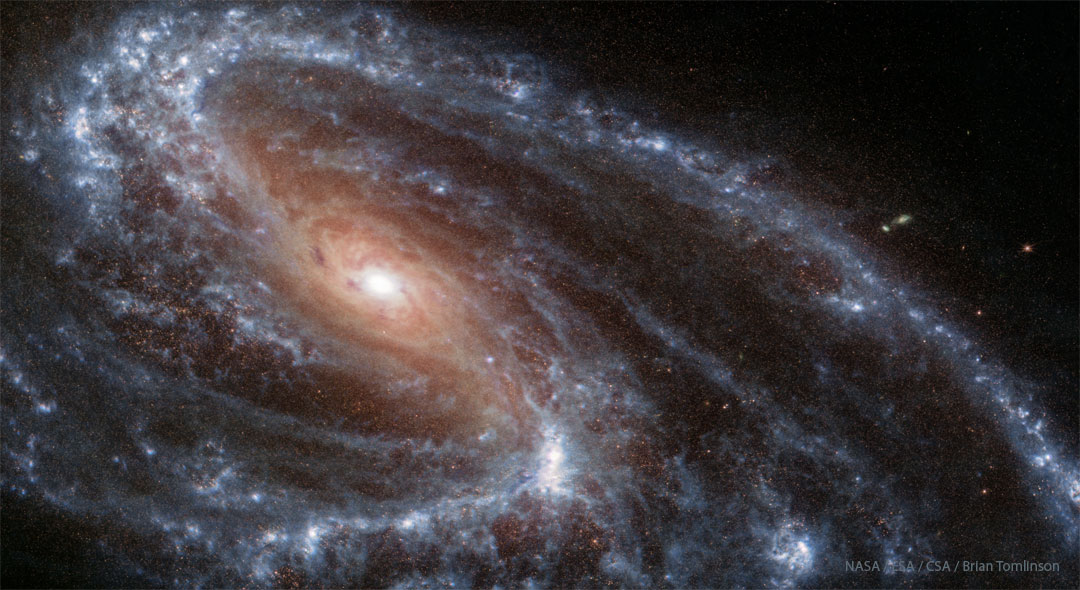2023年8月29日
Unusual Spiral Galaxy M66 from Webb
Image Credit: NASA, ESA, CSA, JWST; Processing: Brian Tomlinson
Explanation: Why isn’t spiral galaxy M66 symmetric? Usually, density waves of gas, dust, and newly formed stars circle a spiral galaxy‘s center and create a nearly symmetric galaxy. The differences between M66’s spiral arms and the apparent displacement of its nucleus are all likely caused by previous close interactions and the tidal gravitational pulls of nearby galaxy neighbors M65 and NGC 3628. The galaxy, featured here in infrared light taken by the James Webb Space Telescope, spans about 100,000 light years, lies about 35 million light years distant, and is the largest galaxy in a group known as the Leo Triplet. Like many spiral galaxies, the long and intricate dust lanes of M66 are seen intertwined with the bright stars and intergalactic dust that follow the spiral arms.
Tomorrow’s picture: open space
韦伯影像: 不寻常的螺旋星系M66
影像提供: NASA, ESA, CSA, JWST; 影像处理: Brian Tomlinson
说明: 为何螺旋星系M66的形状不对称?旋绕螺旋星系中心的气体、尘埃和新诞生恒星之密度波,通常会创造出近乎对称的星系。然而,M66螺旋臂的差异和视觉上的核心移位,皆似乎是与邻近星系M65及NGC 3628先前的近距离接近,以及它们的引力潮汐力之牵引所造成的。在这幅由詹姆斯·韦伯太空望远镜所拍摄的红外光主题影像里,这个距离在3千5百万光年左右、跨幅约有100,000光年的螺旋星系,是狮子座三重星系之中的最大星系。M66与许多螺旋星系一样,拥有颀长、复杂、且交织着亮星与星系际尘埃的尘埃带。
明日的图片: open space



